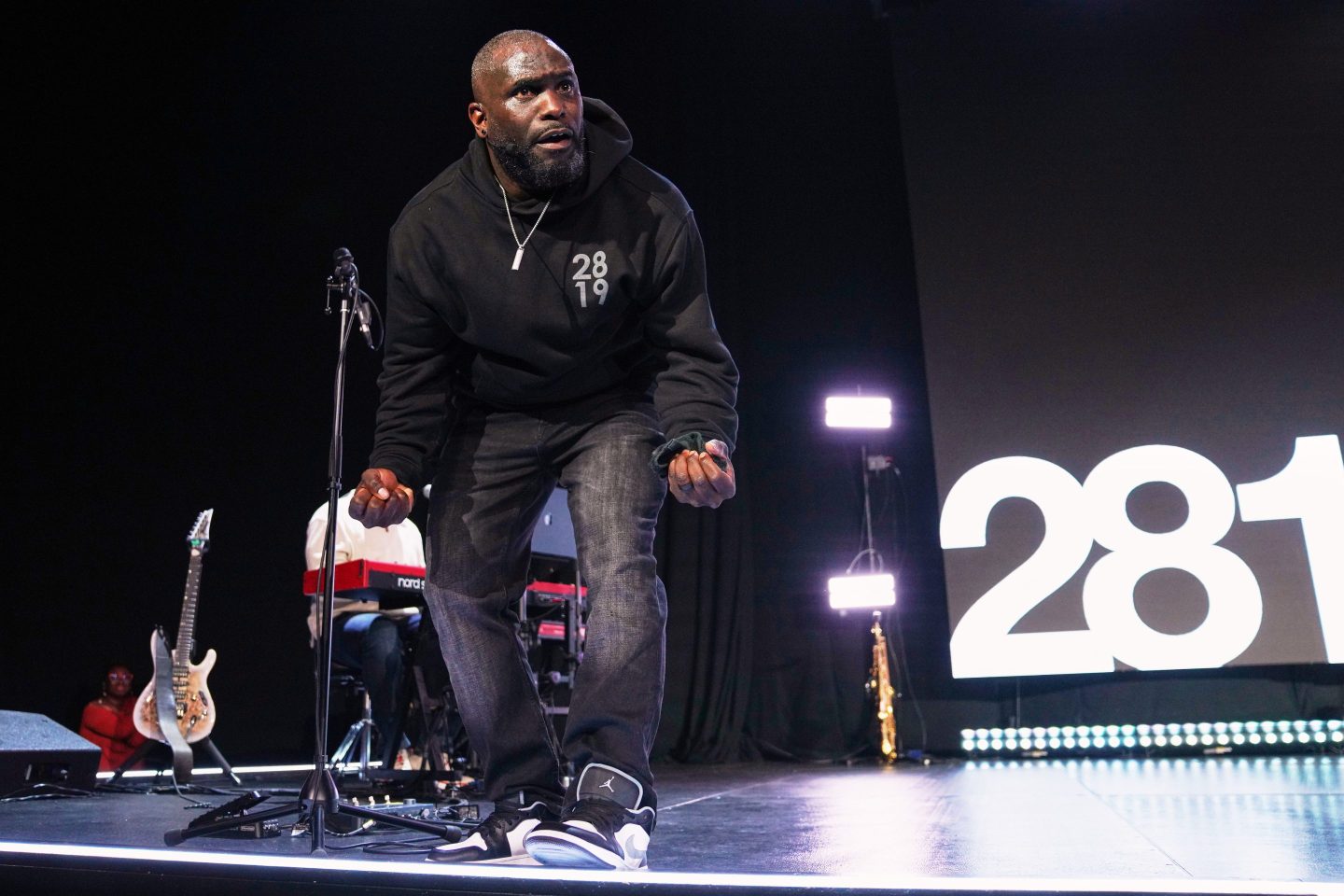This is an installment of Pandemic Purchases, a special series of personal essays about the items bought in the past year that brought the most value and joy to our lives and work while living in lockdown.
Before the pandemic, I liked to tell myself I had a perfectly normal relationship with cookbooks. They could be found, more or less, where you would expect them—in the kitchen, above the sink—or in the dining room, at a push. Style-wise, they skewed toward the aspirational and the lightly intimidating: not exactly technically difficult, but certainly just out of reach of my own abilities.
But as the pandemic kicked off in London last spring, my cookbooks were suddenly everywhere. They were in the living room, the bathroom, the hallway, on the stairs. They were next to the bed, then they were under the bed, then they were in the bed. They were so ubiquitous they were quickly put to practical, non-culinary use: holding doors open and weighing down tablecloths, propping up laptops, being used as blocks for at-home yoga classes. I was already an obsessive, if technically patchy, home cook, and I was already a keen fan of cookbooks. But now, it seemed, I had tipped over the edge. At the height of lockdown No. 1 (the U.K. has reached its third), I was buying nearly one new cookbook a week.
I am, of course, part of a global trend. As the world stayed at home, home cooking skyrocketed for reasons that ranged from the financial, to the practical, to the need for sheer distraction. Cookbook sales marked that surge: Overall they rose 15% from January to September 2020, compared with 2019, according to data compiled by NPD Group. The standout was the bread-specific cookbook, which rose a staggering 145%.
One year after that first lockdown, my tally—conducted by thoroughly checking every bookshelf, and under every bed, in my flat—is roughly 25 pandemic cookbooks purchased or received, an average of two per month. I put the financial damage at approximately $700—not counting the cookbooks purchased for gifts, various subscriptions, food-related memoirs and treatises, audiobooks (Nigella Lawson, How to Eat), a huge range of regional spices and vinegars, and the lost economic productivity of spending hour after hour thinking about what to cook, and eat.
Maybe it should be hard to defend myself, given that recipes—an infinite number, really—are basically freely available, online, while many of the best cooks, I’m sure, find that when it comes to instructions, they simply have no need. But for a global pandemic, I argue that when it comes to vices, an excessive number of cookbooks was just what I needed.

Hear me out. First of all, cookbooks are the perfect, therapeutic bedtime read: One, because it is nearly impossible to remember a recipe you haven’t yet cooked, I can read the same one over and over again, always discovering a tamarind and tomato curry (Meera Sodha, East) or an onion tart (Gill Meller, Root, Stem, Leaf, Flower), with fresh, goldfish-like amazement. Two, once you can remember a recipe, a calm, step-by-step recounting—I find risottos are especially well-suited to this—allows a pandemic-frazzled brain to enter a meditative state of nirvana, but with pictures of cheese. Third, a good cookbook is by its nature escapist: When you are under government orders not to leave your house or hug anyone you know, a sprawling, friends and family crab-boil, complete with strawberry and buttermilk ice cream (Diana Henry, How to Eat a Peach), is pure, sun-dappled fantasy.
Second, you can—as advertised—cook from them. While improvisational cookbooks are their own joy (Niki Segnit, The Flavor Thesaurus), a great pandemic cookbook offers a break, most of all, from the boredom and misery of spending more time with yourself. As the lockdowns wore on, I found I was less and less interested in going off-piste (besides the necessary swapping and substituting), preferring to spend an hour or two somewhere else, with someone else’s monologue drowning out my own. I wanted to follow, and I wanted to do so blindly: to rural Ukraine (Olia Hercules, Summer Kitchens), to the Palestinian coast (Sami Tamimi and Tara Wrigley, Falastin), to Chengdu (Fuchsia Dunlop, Every Grain of Rice), or just to a favorite stretch of bustling east London that now seemed far away (Lori De Mori and Laura Jackson; Towpath).
Third, and perhaps most important, when the news is bad and every day is the same, cookbooks offer new material: something to talk about, something to think about, and yes, something new to eat.
Of course, though I rest my case, I’ve since tried to restrict my impulse buying. For one, we are running out of bookshelf space, and the one we have is sagging under the weight. For another, I have become a lunatic, refusing to cook the same thing twice, desperate to fight my way through hundreds of recipes I now feel obligated to make, if only to bring my unit costs down. But pandemic habits die hard. While writing this article, I bought yet another cookbook, Lara Lee’s Indonesia-focused Coconut & Sambal. I am now waiting—not so patiently—for it to arrive.
More must-read lifestyle and entertainment coverage from Fortune:
- The extraordinary story of the “founding mothers” of NPR
- The natural hair care line launched from a garage that drew a cult following with thousands of rave reviews in less than a year
- Comfortable work-from-home clothes you can still wear when you’re back in the office
- The Supreme “spark”: How the streetwear legend could shape the future of VF
- A guide to upgrading your spring cleaning











